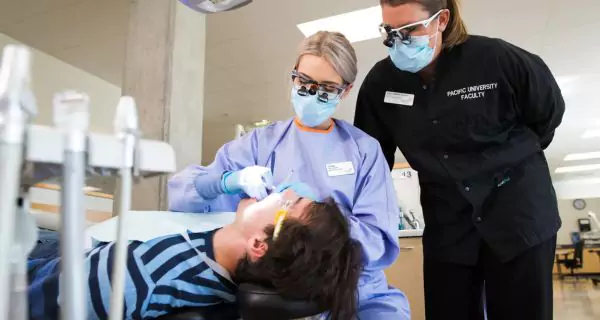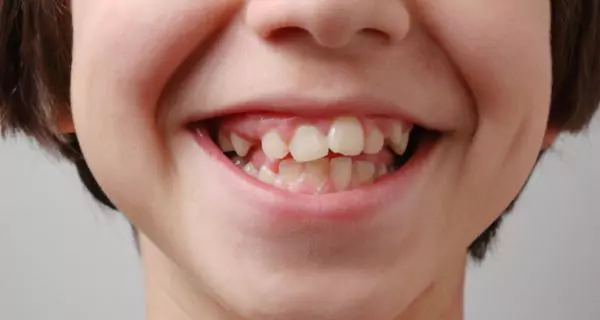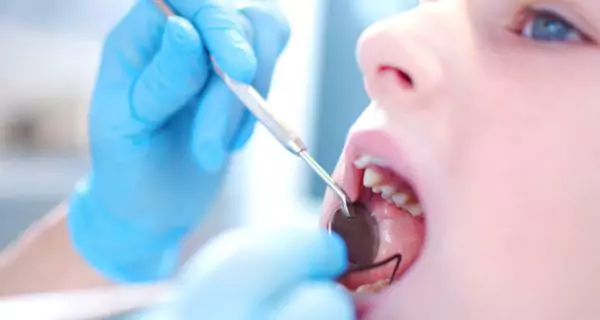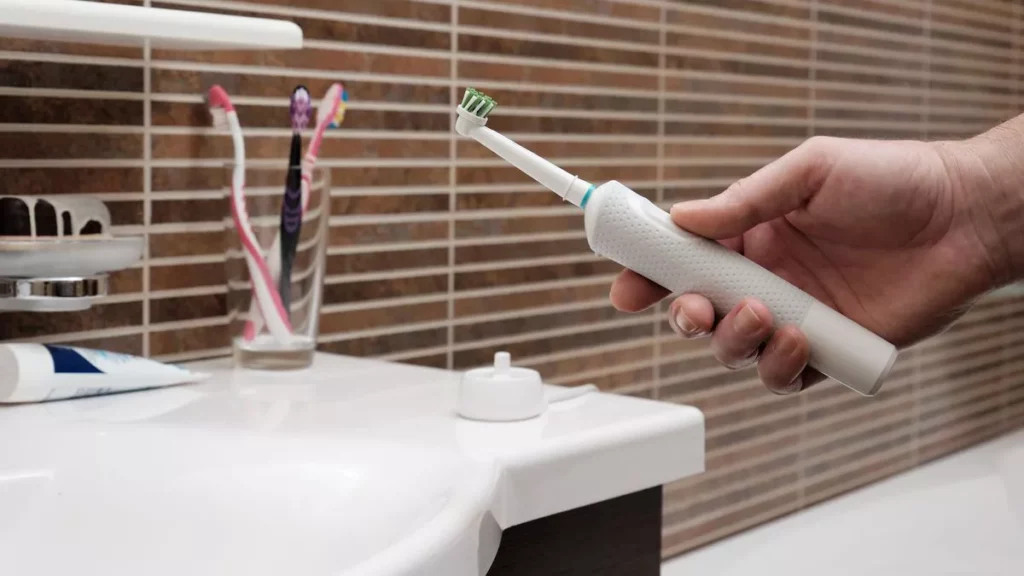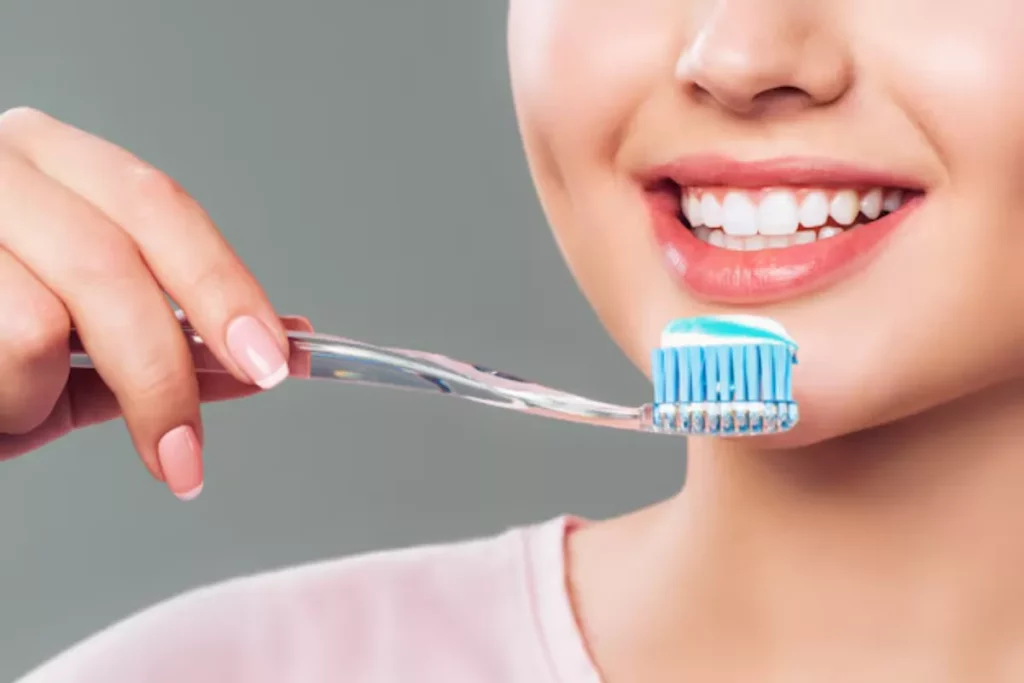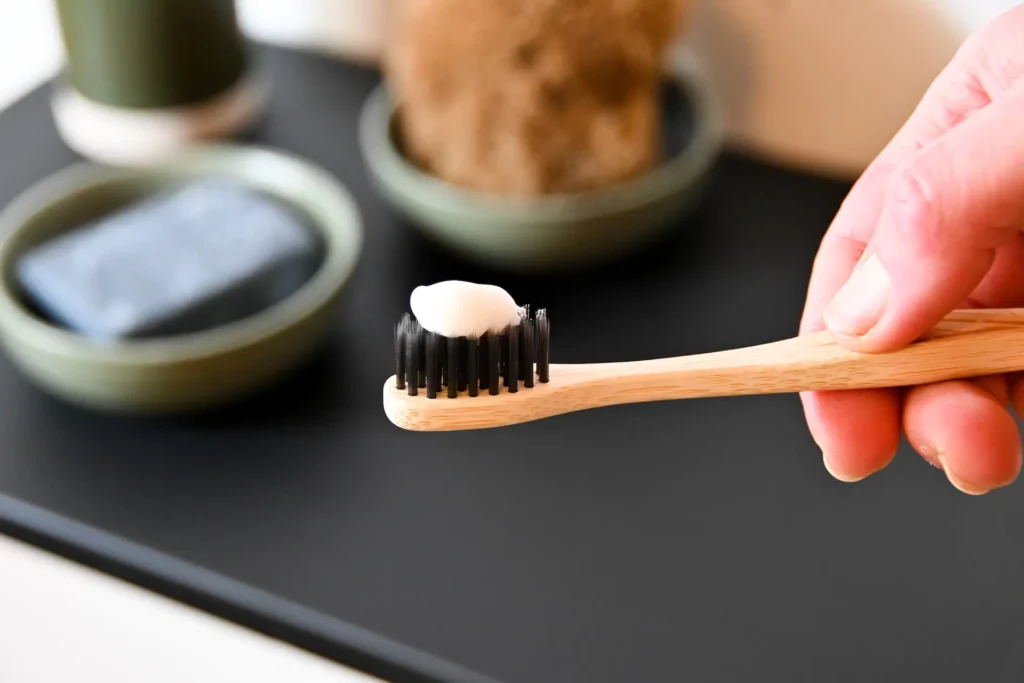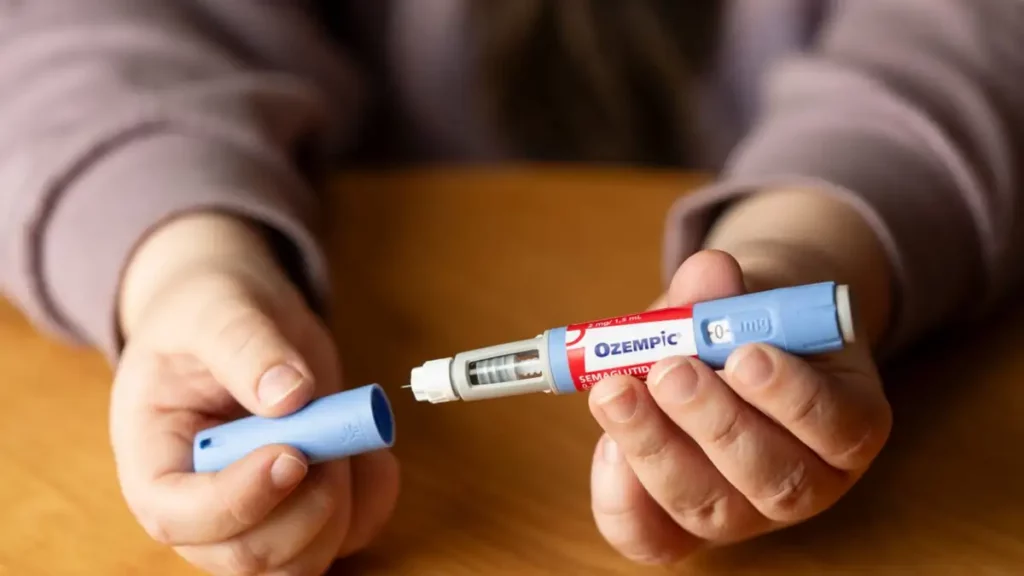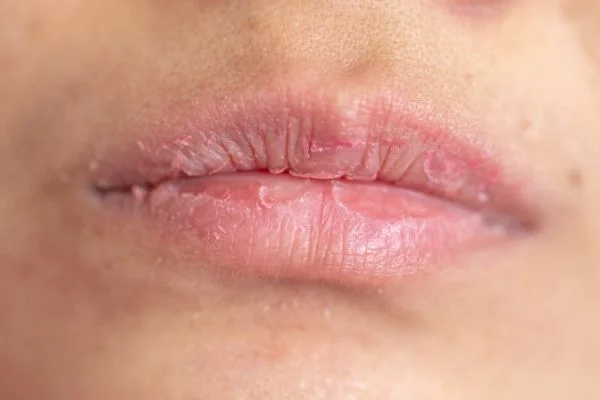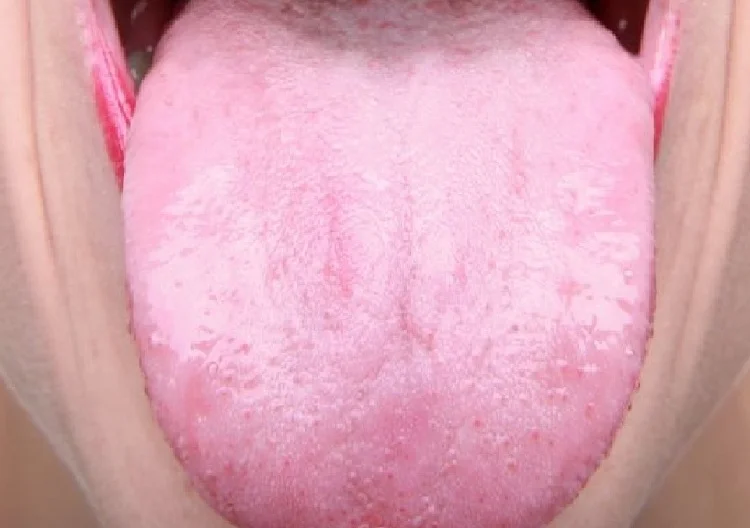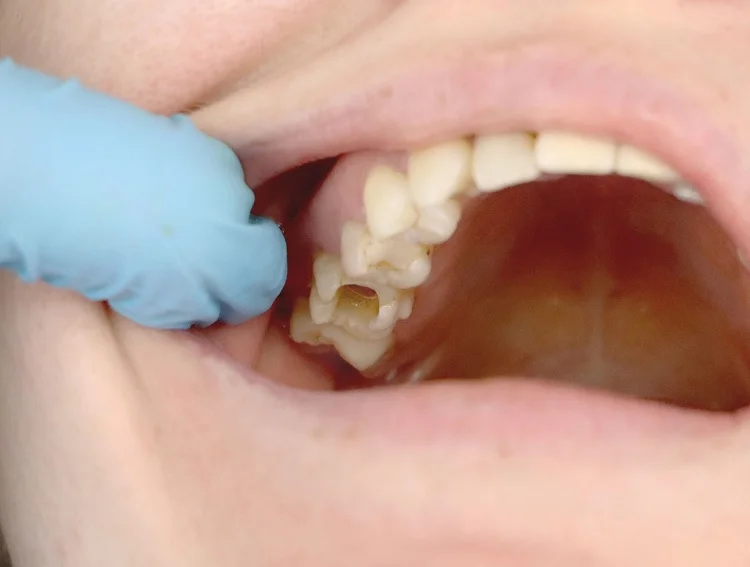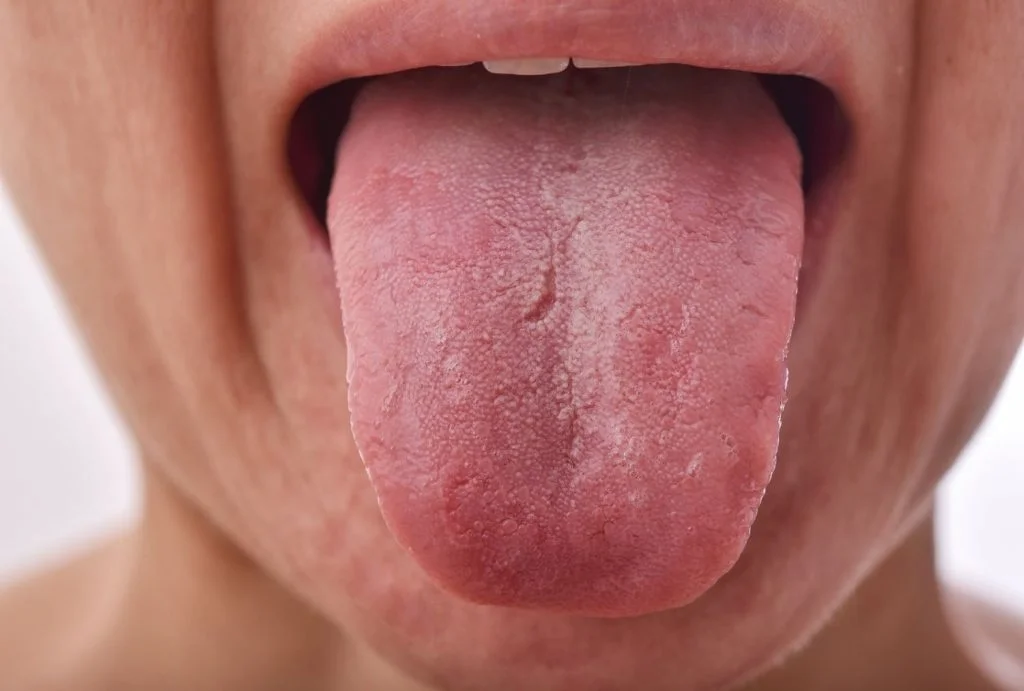Last Updated on: 19th September 2025, 12:30 pm
Speech disorders are conditions that impact a person’s ability to produce sounds correctly, affecting communication. These disorders can be linked to oral health issues like muscle weakness, dental problems, or neurological conditions, making regular dental care essential.
Speech disorders can exacerbate a child’s emotional, social, and academic challenges.
Nearly 1 in 12 children aged 3–17 in the U.S. experience a speech, language, voice, or swallowing disorder each year. While we often associate these issues with neurological or developmental conditions, oral health also plays a key role in how children learn to speak. Factors like dental alignment, tongue mobility, and even chewing habits significantly influence a child’s ability to speak clearly.
This article explores the early signs of speech disorders, how poor oral habits and nutrition contribute to them, and what parents can do to support healthy speech through proper dental care.
What Are Speech Disorders?
Speech disorders refer to challenges in producing sounds clearly or fluently, or issues related to voice quality. Some common types include:
- Articulation disorders: trouble pronouncing specific sounds, such as “r” or “s”.
- Fluency disorders: interruptions in the flow of speech, like stuttering.
- Voice disorders: Abnormal pitch, volume, or quality of the voice.
- Apraxia of speech: difficulty coordinating the muscle movements necessary for speech.
These difficulties often begin in early childhood and may be linked to structural or functional issues in the mouth, or even to feeding habits.
Common signs and symptoms
Parents are usually the first to notice when something doesn’t seem right with their child’s speech. Some signs that may indicate your child is struggling with speech or language development:
- Starts speaking later than other children their age
- Struggles with specific sounds (like “r,” “s,” or “z”)
- Speech is hard to understand, even for family members
- Drools excessively beyond age 3
- Has trouble chewing or swallowing
- Breathes mostly through the mouth
- Frequent ear infections or hearing problems.
While some of these may fall within typical development, ongoing concerns should be evaluated by professionals. Early intervention may involve:
- Pediatric dentists: to identify and treat oral issues affecting speech.
- Speech-language pathologists (SLPs): to work on speech production and language development.
- ENT specialists: to address hearing or breathing problems that may affect speech.
A multidisciplinary approach ensures comprehensive support for your child.
The importance of early intervention
Early detection and treatment of speech and oral health issues are vital. The National Institute on Deafness and Other Communication Disorders reports that over 55% of children with speech or language disorders receive intervention services. Timely support can significantly improve communication skills and facilitate overall development.
How Oral Health Impacts Speech Disorders?
The mouth is essential not just for eating but also for speaking. Oral health issues that can affect speech include:
- Dental alignment: Misaligned or missing teeth can hinder proper sound articulation.
- Malocclusion: Improper bite can disrupt airflow and tongue movement, affecting sounds like “s” and “z”.
- Jaw issues: Problems with jaw growth or the temporomandibular joint (TMJ) can cause pain and speech difficulties.
- Tongue-tie (ankyloglossia): A short frenulum restricts tongue movement, impacting sounds like “l” and “r”.
- Tongue posture: Incorrect resting position can lead to dental crowding and speech issues.
- Oral diseases: Conditions like gum disease or cavities can cause discomfort, affecting speech.
Research indicates that premature loss of baby teeth can increase the risk of speech distortion.
Habits that can affect speech
Certain early-life habits can negatively impact oral development and speech:
- Prolonged use of pacifiers or bottles: Extended use can deform the palate and alter bite alignment.
- Thumb sucking: can push teeth out of alignment, affecting speech.
- Poor oral hygiene: leads to cavities and early tooth loss, disrupting speech development.
- Delayed dental visits: Missing early check-ups often allows preventable issues to worsen.
The American Academy of Pediatric Dentistry recommends a dental visit by age one.
How Nutrition and Hearing Affect Speech Development?
When a child learns to speak, they’re not just repeating sounds; they’re also engaging muscles, bones, hearing, and memory. That’s why healthy speech development is closely tied to both what children eat and how well they hear.
Nutrition’s role in speech development
Nutrition plays a pivotal role in children’s oral health, directly influencing their ability to develop clear and effective speech.
- Chewing firm foods: Encouraging children to chew firm foods like apples, carrots, and whole-grain bread helps strengthen jaw muscles and enhances oral motor skills essential for articulation.
- Essential nutrients: Calcium and vitamin D are vital for the development of strong teeth and bones. Sufficient intake of these nutrients supports the structural integrity of the oral cavity, facilitating proper speech development.
- Limiting sugars: Reducing the consumption of added sugars is crucial, as excessive sugar intake is associated with an increased risk of dental caries. Tooth decay can lead to pain and tooth loss, impairing a child’s ability to pronounce words correctly.
- Varied textures: Introducing a variety of food textures stimulates the tongue, lips, and cheeks, promoting the development of muscles involved in speech. This sensory experience aids in refining the movements necessary for clear articulation.
Bidirectional relationship between nutrition and oral health
The ADA emphasizes a bidirectional relationship between nutrition and oral health:
- Poor nutrition can compromise oral health, hindering speech development.
- Conversely, oral health issues can affect nutritional intake, as discomfort or difficulty in chewing may limit food choices, potentially leading to nutrient deficiencies.
This interconnection underscores the importance of a balanced diet in supporting both oral health and speech development in children.
How hearing affects speech
To learn how to speak, a child needs to be able to hear clearly. Hearing allows children to pick up the sounds around them, recognize how words are supposed to sound, and imitate speech correctly. When there are hearing problems, speech and language development can be delayed.
- Dental infections: Infections in the mouth, especially in the upper molars, can spread to nearby areas like the middle ear. This may lead to ear infections, ear pain, and in some cases, conductive hearing loss, a type of hearing loss caused by fluid or blockage in the ear.
- TMJ disorders: The TMJ connects the lower jaw to the skull; it’s located very close to the ear. When this joint isn’t functioning properly, it can cause:
- a feeling of fullness or pressure in the ear
- ringing in the ears (tinnitus)
- ear pain
- temporary hearing difficulties
- Bruxism (teeth grinding): Bruxism creates muscle tension in the jaw, which can affect the Eustachian tube, the tiny canal that balances pressure in the middle ear. This can result in:
- ringing or buzzing in the ears
- pressure or discomfort
- brief episodes of reduced hearing
- Cleft palate: Children born with a cleft palate are at higher risk for recurrent middle ear infections. The muscles that help open and close the Eustachian tube may not work properly, leading to:
- fluid buildup in the middle ear
- frequent ear infections (otitis media)
- conductive hearing loss
Because hearing is so closely tied to speech development, children with any of these conditions must receive regular check-ups and hearing evaluations. Early detection and treatment will make a big difference in how well they learn to communicate.
How to Support Children with Speech Disorders?
Parents and caregivers can make a big difference in a child’s speech development with simple, daily actions:
- daily conversations: engaging in clear, eye-contact-rich dialogues.
- reading aloud: enhances vocabulary and comprehension.
- singing and rhyming: helps with sound recognition and rhythm.
- offering choices: encourages verbal expression (“do you want an apple or a banana?”).
- describing activities: narrating daily tasks to build word associations.
- limiting pacifier and bottle use beyond 12 months: reduces the risk of oral development issues.
- encouraging chewing: providing foods that promote jaw strength.
- facial exercises: activities like blowing bubbles or moving the tongue around can improve muscle coordination.
- regular dental visits: ensure early detection and prevention of oral issues.
Recommended products that support speech and oral health
Consider incorporating:
- silicone teethers: soothe gums and promote jaw development.
- textured toothbrushes: serve to enhance oral hygiene and sensory experience.
- educational apps: make language learning interactive and fun.
- orthodontic pacifiers: are designed to support healthy oral development.
- healthy snacks: Crunchy fruits and vegetables encourage chewing.
Speech disorders in children clearly stem from various causes, many of which are directly tied to oral health. Misaligned teeth, limited tongue movement, prolonged thumb-sucking, or a poor diet can all affect how a child learns to communicate.
By staying informed and involved, you can make a big difference in your child’s ability to express themselves. Simple things, like regular dental check-ups, a healthy diet, and fun language activities at home, go a long way in helping your child speak more clearly and feel more confident.
Frequently Asked Questions
Is it normal if my 3-year-old doesn’t talk much yet?
Can screen time really impact language development?
What if my child understands everything but doesn’t talk?
Can a narrow palate interfere with speech?
What’s the role of the tongue in pronunciation?
Voice and Search (Q&A)
How can oral health problems cause speech disorders in children?
Oral health problems like misaligned teeth, tongue-tie, or malocclusion can affect how the tongue, lips, and jaw move, making it harder for children to pronounce sounds clearly.
What are early signs that my child might have a speech disorder?
Signs include delayed speech, trouble pronouncing certain sounds, unclear speech, excessive drooling after age 3, or difficulty chewing and swallowing.
How can parents help improve their child’s speech at home?
Parents can read aloud, engage in daily conversations, offer chewy foods to strengthen jaw muscles, limit pacifiers after 12 months, and ensure regular dental checkups.
Share
References
1. ADA. (2023, August 30). Nutrition and oral health. American Dental Association. https://www.ada.org/resources/ada-library/oral-health-topics/nutrition-and-oral-health
2. Bommangoudar, J. S., Chandrashekhar, S., Shetty, S., & Sidral, S. (2020). Pedodontists Role in Managing Speech Impairments Due to Structural Imperfections and Oral Habits: A Literature Review. International Journal of Clinical Pediatric Dentistry, 13(1), 85–90. https://doi.org/10.5005/jp-journals-10005-1745
3. NIDCD. (2025, March 11). Quick statistics about voice, speech, language. National Institute on Deafness and Other Communication Disorders. https://www.nidcd.nih.gov/health/statistics/quick-statistics-voice-speech-language
4. Rocha, I. A., Borges, O. A. C., Ribeiro, L. M., Oliveira, M. G., Marques, A. M., Freire, M. J., Maia, L., Martins, J. P. A., & Serra, N. J. M. (2024). Juvenile language disorders and their interaction with dentistry: a bibliometric analysis. Acta Odontológica Latinoamericana, 37(1), 68–78. https://doi.org/10.54589/aol.37/1/68
5. Watt, S., Dyer, T. A., Marshman, Z., & Jones, K. (2024). Does poor oral health impact on young children’s development? A rapid review. BDJ, 237(4), 255–260. https://doi.org/10.1038/s41415-024-7738-4
-
Dr. Yeidy Carolina Mesa [Author]
DDS Yeidy Carolina Mesa Passionate Dentist | Advocate for Accessible Oral Health Education Graduating from Universidad CES in 2022, I am a dedicated general dentist with a lifelong passion for helping others and making a meaningful impact in the world. My journey into dentistry began at the age of 7, inspired by my own experience with braces and overcoming a fear of the dentist. This personal journey shaped my mission to help patients conquer their own dental anxieties and embrace a healthier,...
View all posts
-
Nayibe Cubillos M. [Medical Reviewer]
Pharmaceutical Chemestry |Pharmaceutical Process Management | Pharmaceutical Care | Pharmaceutical Services Audit | Pharmaceutical Services Process Consulting | Content Project Manager | SEO Knowledge | Content Writer | Leadership | Scrum Master
View all posts
A healthcare writer with a solid background in pharmaceutical chemistry and a thorough understanding of Colombian regulatory processes and comprehensive sector management, she has significant experience coordinating and leading multidisciplina...

